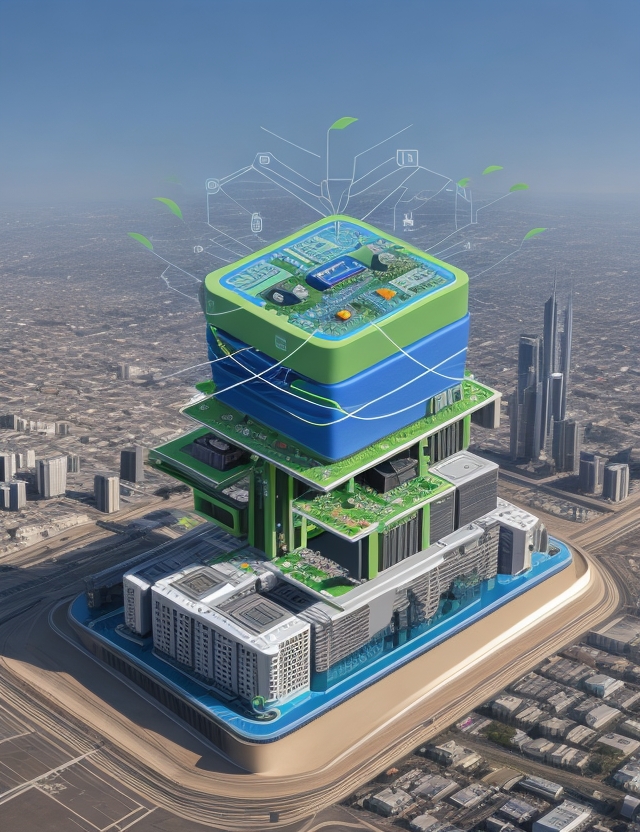The Internet of Things (IoT) is evolving fast, and so is the way we process data. With billions of connected devices, relying solely on the cloud for data processing is becoming impractical. This is where Edge computing in IoT steps in, offering a smarter, faster, and more efficient way to handle the massive influx of data.
What is Edge Computing in IoT?
In simple terms, edge computing brings data processing closer to the source of data—right at the “edge” of the network. Unlike traditional cloud computing, where information has to travel long distances to data centers, edge computing allows IoT devices to analyze and process data locally. This minimizes latency, improves response times, and reduces bandwidth use.
Imagine a smart thermostat in your home that can analyze your temperature preferences without constantly pinging a central server. That’s Edge computing in IoT at work!

Why Does IoT Need Edge Computing?
As the number of IoT devices continues to explode, the amount of data being generated is off the charts. Sending all that information to the cloud and back takes time, creates bottlenecks, and can even lead to network congestion. By processing data closer to where it’s collected, edge computing in IoT ensures quicker decision-making, which is essential for real-time applications like autonomous vehicles, smart cities, and industrial automation.
If your self-driving car had to wait for instructions from a distant server, every millisecond could be a safety risk. With edge computing, crucial decisions can be made instantly on the spot, making IoT devices smarter and more reliable.
Real-World Applications of Edge Computing in IoT
Edge computing isn’t just a buzzword; it’s transforming industries in a big way. Let’s explore some cool applications:
- Smart Cities: Traffic management systems can make immediate decisions based on real-time data, reducing congestion and improving safety without the need for external servers.
- Healthcare: In remote healthcare monitoring, medical devices can track and analyze patient data instantly, alerting doctors to potential issues without delay.
- Industrial IoT (IIoT): In manufacturing plants, machines equipped with edge computing can detect faults and anomalies in real time, preventing costly downtime.
These examples highlight the enormous potential of edge computing in IoT across various sectors, providing faster insights and better efficiency.
How Does Edge Computing Improve Security in IoT?
One of the biggest challenges facing IoT is data security. With so many connected devices, the risk of breaches and attacks is real. Luckily, edge computing plays a significant role in tightening security. By processing data locally, sensitive information doesn’t have to travel over the network to the cloud, reducing the chances of interception.
In addition, edge devices can implement encryption and access control measures right at the source. Imagine your smart home devices processing sensitive data locally without relying on distant servers—making it tougher for hackers to gain access.
The Benefits of Edge Computing in IoT
So, what makes edge computing in IoT such a game-changer? Here are some key benefits:
- Lower Latency: With data processing happening close to the source, devices respond faster, which is critical for time-sensitive applications like healthcare and autonomous vehicles.
- Reduced Bandwidth: By processing data locally, you cut down on the amount of information sent to the cloud, saving bandwidth and reducing operational costs.
- Improved Reliability: If cloud services go down, edge computing ensures IoT devices can continue to function independently without interruption.
- Enhanced Privacy: Localized data processing means sensitive information doesn’t have to be transmitted across the network, adding an extra layer of privacy protection.

Challenges of Edge Computing in IoT
While edge computing in IoT offers many benefits, it’s not without its challenges. One of the primary hurdles is managing and maintaining a large number of distributed edge devices. Ensuring that each device is updated with the latest software and security patches can be a logistical nightmare for organizations.
Additionally, the initial setup cost of edge infrastructure can be higher than cloud-based systems, especially for smaller businesses. However, the long-term benefits in terms of speed, reliability, and security often outweigh the initial investment.
The Future of Edge Computing in IoT
As IoT continues to grow, so will the demand for edge computing. Shortly, we can expect more powerful edge devices with advanced processing capabilities. Innovations in AI and machine learning will further enhance edge computing in IoT, allowing devices to make smarter decisions on the fly.
Industries like healthcare, automotive, and manufacturing are already seeing the transformative effects of this technology, but the possibilities are limitless. As more devices connect to the internet, edge computing will become an integral part of our digital landscape.
Edge computing isn’t just a trend—it’s the future of IoT. By processing data where it’s needed most, we can unlock the full potential of smart devices, making our world faster, safer, and more efficient.
Read More Post
A Glimpse into Remote Work Technology Trends in 2024
How to Make Money on Social Media:
10 Ideas for 2024 20 Ways to Make Money



